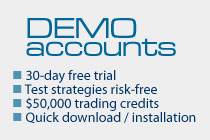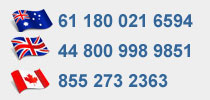 |
|||
 | |||
|
We offer FX, FX Options, Contracts for Difference and Precious Metal trading delivered on the most powerful trading platform technologies. | Forex Trading The Forex market today is a global dynamic market Until the advent of powerful internet trading software and technologies, Forex or FX, was primarily the domain of bank, financial institutions, and multinational corporations. But times have changed. The FX market is now a 24-hour market for almost 7-days a week that does not depend on business hours of foreign exchanges; but rather, it is connected via information technology platforms among global banks which means there is no physical location and no central exchange. Trades constantly negotiate prices between one another with the resulting market bid/ask prices fed into computers and displayed on official quote screens with exchange rates quoted between banks referred to as Inter-bank Rates. Forex Retail Trading Currency is effectively a commodity whose value can change against other currencies, as well as, other assets, such as precious metals and oil. By buying (or selling) a currency, FX Traders look to earn a profit from the movement in the FX currency rate. The beauty of FX is that the cost of trading is also low. This means that retail trades can be transacted for the extreme short-term, literally seconds, as well as, for a longer duration depending upon trader strategy. In an FX transaction, one currency is sold in exchange for another one. The rate expresses the relative value between the two currencies. Currencies are normally identified by a three-digit ‘Swift’ code. €1,000,000 at 1.50 = US $1,500,000 For instance, EUR = the euro, USD = the US dollar, CHF = the Swiss franc and so on. Sometimes, EUR/USD is referred to as a “currency pair”. The rate can be inverted. So a EUR/USD rate of 1.5000 is the same as a USD/EUR rate of 0.6666. In other words, $1 is worth €0.6666. The market convention is that most currencies tend to be quoted against the dollar, but there are notable exceptions, such as with the EUR/USD already mentioned. For Example: A trader believes the EUR is about to increase in value against the USD and buys €1 million at 1.5000. Shortly after, the rate is 1.5050 and the trader closes the position for a profit of USD $5,000. |
||


